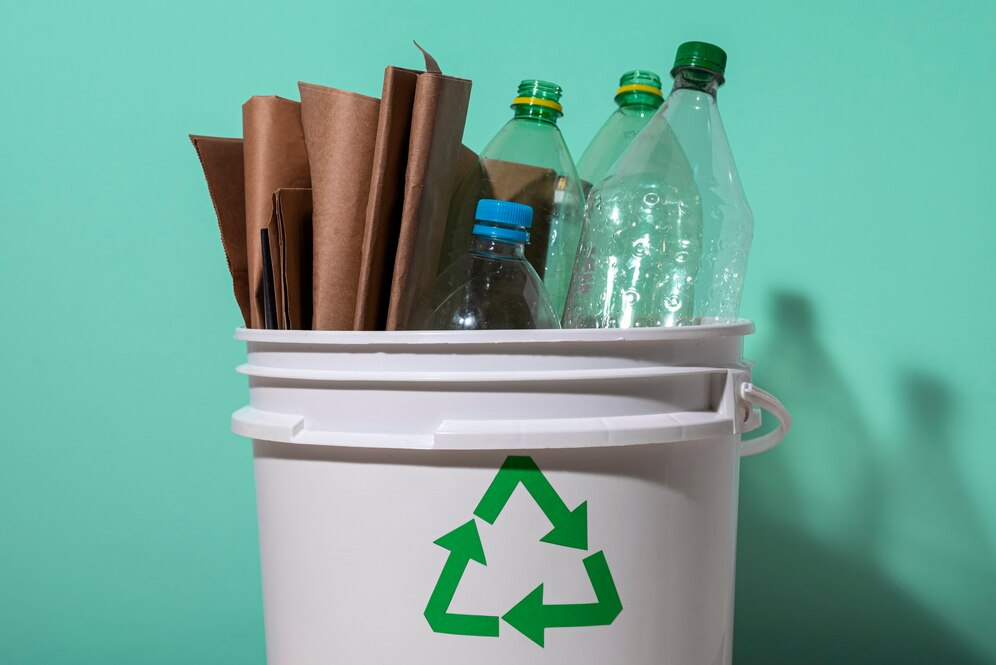1. What are synthetic materials?
Today, there are thousands of different types of synthetic materials available, with new ones being developed all the time.
Synthetic materials are artificial substances created from chemical compounds, often used as substitutes for natural materials like wood, cotton, and leather. Synthetic materials have a wide range of applications, including clothing, food packaging, and construction materials.
Picture 1: Synthetic materials are made from a variety of raw materials
1.1. Why are synthetic materials important?
The first synthetic material was created in
1869 by American chemist John Wesley Hyatt. Celluloid was used to make a variety of products, including billiard balls, combs, and piano keys.
Synthetic materials are now used to make a wide range of products. In fact, synthetic materials are now used in more than half of all manufactured products. According to a report by the Textile Exchange, a non-profit organization that works to promote sustainable practices in the textile industry, synthetic fibers currently represent 64% of global fiber production volumes.
1.2. How are synthetic materials made?

Picture 2: Synthetic materials can be used to create a wide range of products
Synthetic materials are made through a variety of chemical processes. The production of synthetic materials is a complex process that requires a variety of chemical and engineering processes. For example, it takes about four barrels of oil to produce one ton of plastic.
Some of the most common methods include:
- Polymerization: Polymerization is a process that involves linking together small molecules, called monomers, to form larger molecules, called polymers. Polymers are the building blocks of many synthetic materials, including plastics, rubber, and synthetic fibers.
- Vulcanization: Vulcanization is a process that involves heating rubber with sulfur to cross-link the polymer chains. This process makes the rubber stronger, more durable, and more resistant to heat and chemicals. Vulcanized rubber is used to make a wide range of products, including tires, hoses, and seals.
- Electroplating: Electroplating is a process that involves depositing a thin layer of metal onto another surface. This process is used to improve the appearance, durability, and corrosion resistance of metal surfaces. Electroplating is used to coat a wide range of products, including jewelry, automotive parts, and electronic components.
- Distillation: Distillation is a process that separates liquids based on their boiling points. Distillation is used to produce a variety of synthetic materials, including gasoline, diesel fuel, and petrochemicals.
- Fracking: Fracking is a process that extracts oil and gas from shale rock formations. Fracking is used to produce a variety of synthetic materials, including plastics, rubber, and synthetic fibers.
- Biotechnology: Biotechnology is a process that uses living organisms to produce synthetic materials. Biotechnology is used to produce a variety of synthetic materials, including biofuels, bioplastics, and biopharmaceuticals.
1.3. Properties of synthetic materials
- Strength: Synthetic materials are often stronger than natural materials. For example, carbon fiber is five times stronger than steel, but only one-fourth the weight.
- Durability: Synthetic materials are also often more durable than natural materials. For example, plastic pipes are less likely to rust than metal pipes.
- Corrosion resistance: Synthetic materials are often more resistant to corrosion than natural materials. This is because they are made from non-metallic materials that are not susceptible to rusting or other forms of corrosion.
- Ease of fabrication: Synthetic materials are often easier to fabricate than natural materials. For example, plastic can be molded into intricate shapes that would be difficult or impossible to create with natural materials.
- Electrical conductivity: Some synthetic materials are good conductors of electricity, while others are good insulators.
- Optical properties: Some synthetic materials have unique optical properties, such as transparency, reflectivity, and color.
- Thermal conductivity: Some synthetic materials are good conductors of heat, while others are good insulators.
Biocompatibility: Some synthetic materials are biocompatible, meaning that they can be safely implanted in the body.
2. Pros and cons of synthetic materials

Picture 3: Some synthetic materials can be recycled
2.1. Pros
- Performance: Synthetic materials can be engineered to have specific properties that make them ideal for certain applications. For example, synthetic fabrics can be made to be water-resistant, breathable, and durable, making them ideal for activewear.
- Durability: Synthetic tires last longer than natural rubber tires and synthetic building materials can withstand more extreme weather conditions.
- Cost: Synthetic materials are often less expensive than natural materials. According to a study by the World Economic Forum, the cost of producing synthetic materials has fallen by an average of 5% per year over the past 50 years.
2.2. Cons
- Environmental impact: The production and disposal of synthetic materials can have a negative environmental impact. Besides bringing pollutants into the atmosphere, synthetic materials can take hundreds or even thousands of years to decompose in landfills.
- Health concerns: Some synthetic materials may pose health risks, such as reproductive disorders and cancer, depending on their composition and how they are used.
- Quality: Not all synthetic materials are created equal. Cheaper products may not last as long or perform as well as more expensive products.
EuroPlas, the leading manufacturer of filler masterbatch, can play a role in addressing some of the cons of synthetic materials.
EuroPlas has developed a new bioplastic filler called BiOMates. This is a suitable choice for producing environmentally friendly products. It can help businesses to reduce their environmental impact and make their products more sustainable.
Learn more about the bio filler solution at: Bio filler | EuroPlas
3. Case studies of synthetic materials
3.1. Construction
Picture 4: Synthetic materials can create shapes and objects using 3D printing
Did you know synthetic materials are used to build some of the tallest and most iconic structures in the world, such as the Burj Khalifa in Dubai and the Golden Gate Bridge in San Francisco?
The global market for synthetic materials in construction is expected to reach over $1 trillion by 2030. Here are a few examples of how synthetic materials are being used to build a better future:
- Self-healing concrete: Scientists are developing concrete that can heal itself when it cracks. This concrete is made with synthetic materials that can detect and repair cracks automatically. This could lead to more durable and long-lasting concrete structures.
- 3D-printed buildings: This technology is still in its early stages of development, but it has the potential to revolutionize the construction industry.
- Sustainable materials: Recycled plastic is being used to make bricks and roofing tiles. This is helping to reduce waste and create more sustainable buildings.
3.2. Transportation
Synthetic materials are also widely used in the transportation industry to reduce weight, improve fuel efficiency, and increase durability.
Carbon fiber is five times stronger than steel, but only one-fourth the weight. The Boeing 787 Dreamliner is made up of 50% carbon fiber by weight, which makes it 20% more fuel-efficient than previous aircraft. The Chevrolet Corvette Stingray uses a carbon fiber-reinforced plastic body that is 45% lighter than a traditional steel body. This proves advanced plastics are lighter, stronger, and more corrosion-resistant.
3.3. Medical device
Synthetic materials are now used to create artificial organs and tissues, such as heart valves, skin grafts, and even blood vessels.
- Synthetic heart valves: used to replace damaged or diseased heart valves. These are made from a variety of materials, including titanium, carbon fiber, and bovine tissue.
- Artificial joints: made from titanium, cobalt-chromium alloys, and ceramic materials. These materials are chosen for their strength, durability, and biocompatibility, meaning that they are safe to implant in the body.
- Synthetic blood vessels: made from polyester, Dacron, and PTFE (Gore-Tex). Some synthetic blood vessels are now coated with drugs to help prevent blood clots.
3.4. Electronics
Synthetic materials are transforming the world of electronics, making devices smaller, faster, more energy-efficient, durable, and affordable.
From foldable smartphones to wearable electronics to OLED displays, synthetic materials are playing a vital role in developing new and innovative products.
- Foldable smartphones: Synthetic materials such as polyimide and ultra-thin glass are enabling the development of foldable smartphones with flexible displays.
- OLED displays: Organic light-emitting diode (OLED) displays are made with synthetic materials such as organic polymers. The displays are thinner, lighter, and more energy-efficient than traditional LCDs, offering better image quality with deeper blacks and brighter whites.
4. Conclusion
Synthetic materials are playing an increasingly important role in our world, and EuroPlas is a great place to learn about the latest trends and innovations in this field.
From new types of plastics and rubbers to advanced composites, EuroPlas has something to offer everyone involved in the synthetic materials industry. Get to know more at our website.